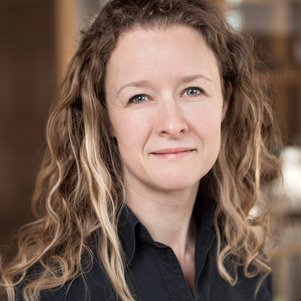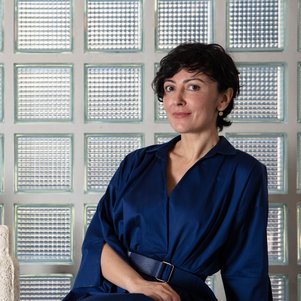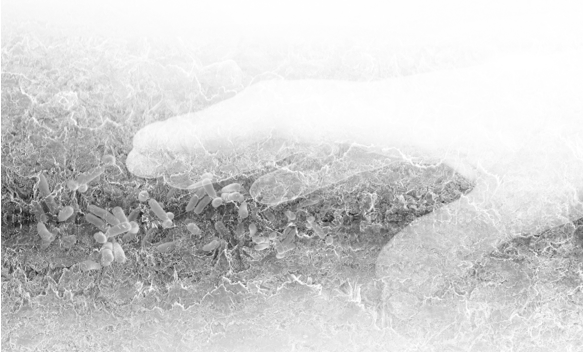NextSkins: EIC Pathfinder grant for collaborative living materials research
A team of researchers from TU Delft, Imperial College London, and Aalto University have received a EIC Pathfinder Challenge grant of 4 million euros for their NextSkins research project on Engineered Living Materials. With this funding, they will develop two types of multi-layered therapeutic and regenerative living materials in the next five years, each with different application areas, i.e., in healthcare for the treatment of human skin diseases; and in high-performance applications, such as protective garments in sports.
Project coordinator Marie-Eve Aubin-Tam and fellow TU Delft researcher Elvin Karana initiated the NextSkins project together with their collaborators Tom Ellis (Imperial College London) and Markus Linder (Aalto University). They both study living materials, Aubin-Tam as Associate Professor in Bionanoscience, and Karana as Professor of Materials Innovation and Design. “We met at Biodate, a speed-dating event for Delft principal investigators to find interdisciplinary collaborators,” Aubin-Tam says. Karana notes that working in this consortium is a dream project for her: “The future of living materials innovation is interdisciplinary. It’s such a pleasure to work with great people who have the same level of ambition to make material-driven societal impact.”
Human-microbe interaction and social acceptance of living materials are explored by Elvin Karana’s group at the faculty of Industrial Design Engineering (Illustration by Ward Groutars).
Living mother-of-pearl
Just like skin, the materials will have different layers, each with their own function, such as sensing, repairing, and protecting. “We want to make a material that is alive, with living cells inside the material – not only during its fabrication, but also during its use,” Aubin-Tam explains. “Engineering living materials will fundamentally change the ways in which we design and live with products,” Karana adds, “and our ambition is to develop two breakthrough living materials that will potentially change the lives of many.”
One of the materials is based on a composite that consists of very thin layers of calcium carbonate and biopolymers, mimicking mother-of-pearl. “This layered structure makes it not only shiny, but also very stiff and tough,” Aubin-Tam explains. “This makes it suitable as a protective element, for example, in a helmet.” Her group has already engineered this mother-of-pearl inspired material in the lab. The next step is to make it self-healing and responsive by adding living spores. “In dry form, these spores are dormant bacteria, but they can be awakened to repair or strengthen the material at specific spots.”
Bacteria produce this nacre-inspired tough composite material, made by the group of Marie-Eve Aubin-Tam (Bionanoscience department, Applied Sciences).
Therapeutic Living Materials
The other material is a ‘therapeutic skin’, a living hydrogel, consisting of a bacterial cellulose that hosts sense-and-respond yeast cells and will be designed for the treatment of human skin diseases. The potential innovative consumer products, such as skin masks and pillow covers, will have a major impact on the well-being of those suffering from inflammatory skin diseases, such as atopic dermatitis. Karana: “Atopic dermatitis is one of the most common diseases, affecting 20% of children and 5% of adults globally. It is characterised by intense itching, inflammation, and red thickened skin, which severely impact quality of life due to physical discomfort, restricted social interactions, and sleep disruption.”
While some Engineered Living Materials already exist, it has been difficult to create substantial pieces of these types of materials. This is why the consortium aims to prove that they can make a material that measures centimetres in width, length, and height. “For the mother-of-pearl composite, we actually expect that we can go much larger than that,” Aubin-Tam says, “I think we can even scale up to metres.” The other challenge the researchers will tackle is controlling how the layers of the material behave over time. “This will be a proof of concept that we can really make this work,” says Aubin-Tam. Karana: “We will develop a digital tool to automatically explore how the qualities of our regenerative NextSkins develop over time and how to achieve optimal performance of NextSkins integrated products in use.”
Unique collaboration
Now that societal impact has become more and more relevant in research, the collaboration between technological development and design engineering has also become more important. “What is unique about our collaboration is that we will systematically involve the potential end- users and designers in our research, so that materials and product development happen in synergy. This is particularly important in the design of novel living materials, which are unfamiliar to society. If we aim for widespread acceptance of our materials in everyday consumer products, the collaboration between biotechnology and design is inevitable. Design brings user perspective to the development of living materials early on in the process,” Karana says.
Before fully developing the materials, design researchers will make both digital and real-world working prototypes, so that they can discuss the NextSkins proposals with potential end users (such as skin patients), medical doctors, and designers. Karana: “We would particularly like to focus on the overall experience and social acceptance of the product, for example, the touch and feel on the skin. We’ll also explore what novel care practices our living materials would require from end users and how design can support the development of such practices.”
Another unique aspect of this project is that Karana’s team at the Faculty of Industrial Design Engineering will explore and prototype with NextSkins in their own BioLab, which opens its doors in October. With this lab, TU Delft will host one of the first ML-1 biolabs located within a design engineering faculty that explores the design potentials of living organisms for sustainable material alternatives, unique functions, and experiences in everyday products.



